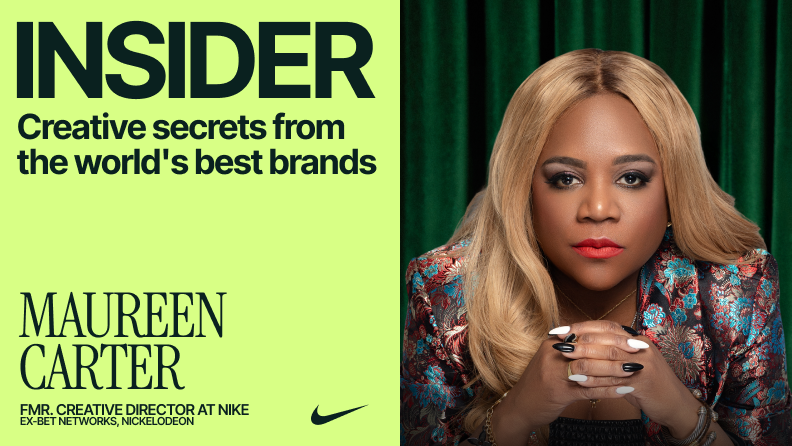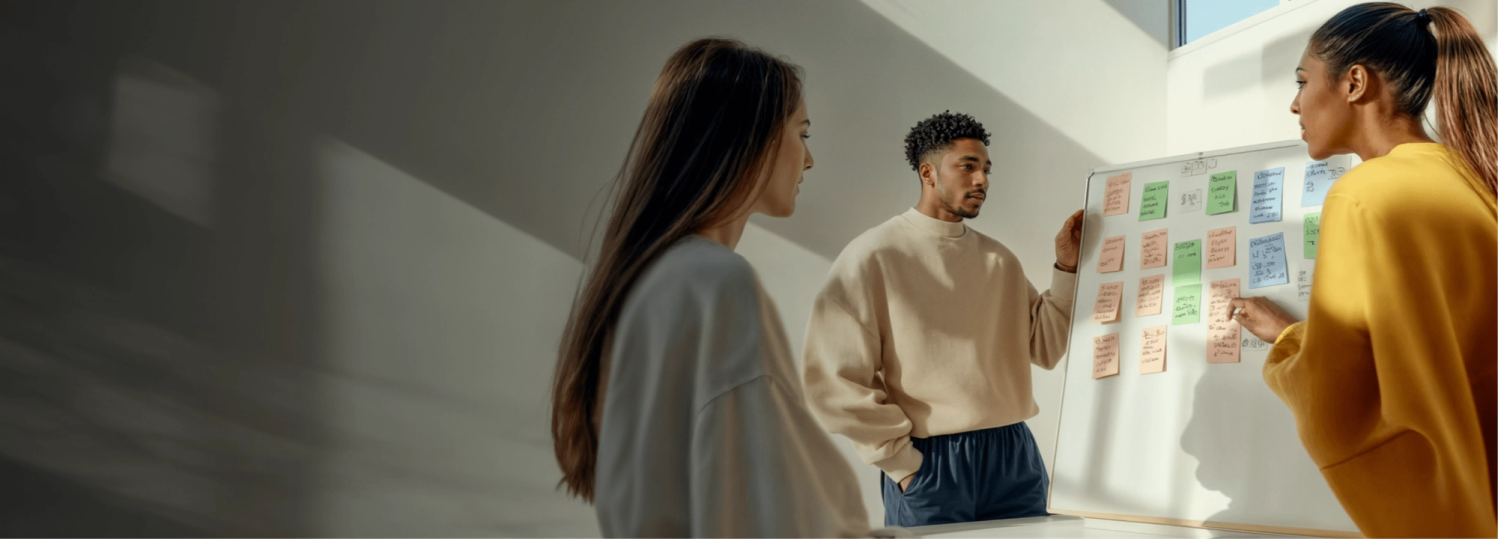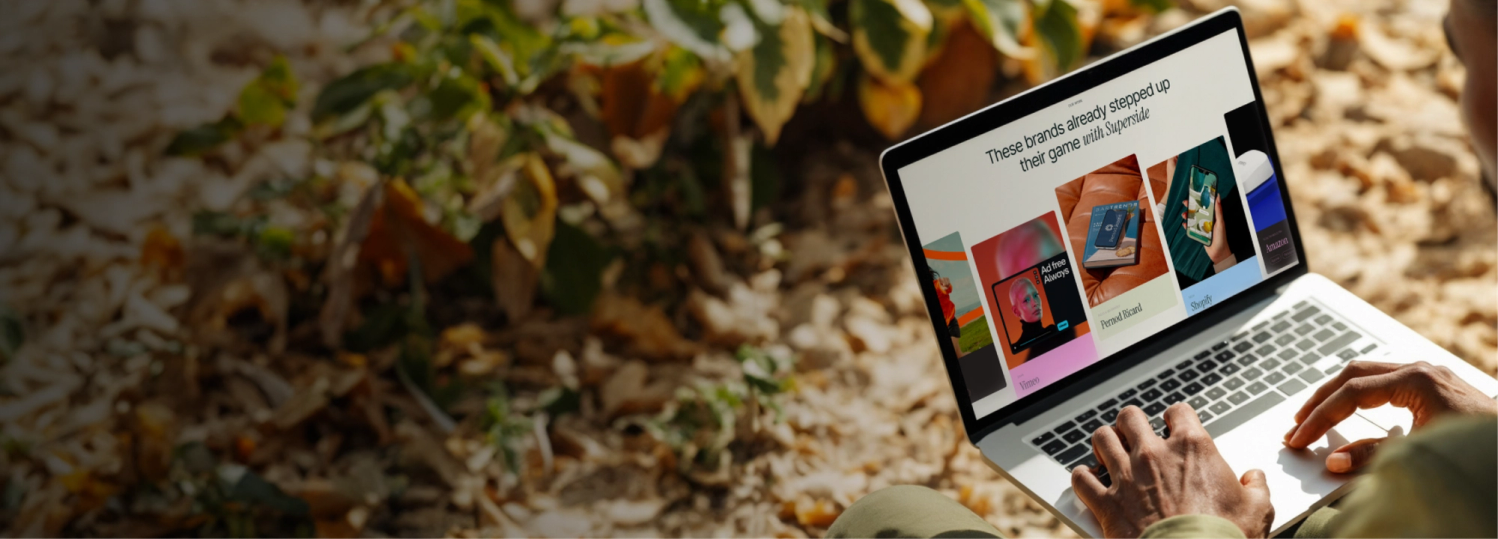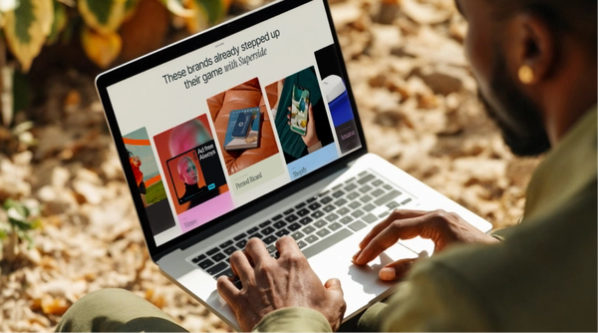5 Creative Leadership Trends to Know in 2024

How can design snag a seat at the table this year? Veteran creative leader Adam Morgan (Splunk, ex-Adobe) let us in on the trends design leaders at big brands need to know about if they want to go from “service” to “strategy” and drive change in 2024.
Every year is a big year for creative leaders. New tech, new possibilities and new demands (or old demands in new hats) give those atop the creative pyramid a better shot at achieving design maturity than the year prior. And yet, it’s hard to plan accordingly without an inkling of what the year will bring.
To get an expert glimpse into what creative leadership trends may arise in 2024, Superside's Kae Neskovic, Creative Director of Branding, Digital Ads & Socials, spoke with Adam Morgan, Senior Director of Brand & Creative at Splunk and host of Real Creative Leadership.
As a seasoned creative leader and trendsetter in his own right, Morgan shared some thoughts about where the industry is headed this year, and how enterprise and mid-market design leaders can leverage growing trends to cement their space at the C-suite table.
Take his and Neskovic's suggestions to heart, and work them into your creative strategy this year!
1. AI Isn’t Coming for Your Job
It’s clear to those paying attention we’ve got a long way to go before we’re all replaced by digital avatars. AI is just a tool, and without an experienced designer at the helm, it’s no more useful than Illustrator in the hands of a marketer. It’s the combination of a discerning creative with AI that really brings out the potential of this technology.
Enterprise and mid-market companies have been particularly excited by AI’s ability to speed up workflows, given the large volumes of creative they need to produce. But according to Morgan, it’s important to re-focus that excitement on designers themselves.
“There are a lot of tools out there that help us work faster and start brainstorming faster,” Morgan admits. “But the real trend is around how creatives are using AI.” Morgan notes that human ingenuity is what most determines the usefulness of AI in design. “Become the experts, become the ones who show the most value out of using some of those tools.”
The initial fear is off. AI’s not going to steal our jobs, but we need to prepare now to integrate AI into our teams.

The takeaway
The bots aren’t coming for us, but early adopters will have the upper hand in 2024. Bake AI into your creative strategy, and do it soon. Design leaders at mid-market and enterprise companies should put the spotlight on their designers, and encourage them to explore AI tools as they fit them into creative workflows.
2. Humanity Is Leading the Charge
Humans prefer creative made by humans. We get meaning out of media when we can see meaning was put into it; that the creator understands some lesser-seen part of our humanness. When our audience sees themselves in our marketing, the connection between consumer and brand strengthens.
This is especially important at large companies. Empathetic, human-first marketing is how you’ll connect with your audience and prove the value of design as a strategic imperative.
“Brands and creatives are learning that AI and automation aren't the ultimate end goal,” Morgan said. According to Morgan, the nature of AI means humans will continue to have an edge in novel thinking, which translates to a stronger connection between brands and their audiences. He reiterated the need to lean on your design knowledge in this area, tempering it with a dose of consumer empathy.
It really is our humanity that makes our work unique. It’s the ability to make creative leaps and try new ideas.

The takeaway
Lean into your own humanity, and apply it to how you connect with your customer’s humanity. Think beyond products and services, and lead with emotional need. Find out what your audience wants from your brand on a personal level, and put those insights at the center of your creative strategy in 2024.
3. Global Growth Is Here
The internet has been whittling away at our geographical divides since its first click. As more businesses embrace remote work as the norm, the talent without borders movement will only grow. There’ll be more talent to pick from, with different skill sets and cultural reference points to draw on.
Creative leaders at established companies have the chance to pick from a near-infinite pool of talent, and capitalize on the capabilities and perspectives they offer.
“The global stage is shrinking in terms of talent,” said Morgan. Noting the seemingly-permanent state of remote work for many companies, he explained. “I'm seeing more and more companies with teams and creatives from all different parts of the world.” So, if your company has the resources to do so, consider scouring the globe for exceptional talent.
It’s no longer just the odd satellite team—there’s a lot more collaboration, a lot more visibility, a lot more understanding of the talent worldwide, it really is a narrowing field.

The takeaway
Creative leaders: Widen your search for talent. You’ll find perspectives and skillsets you’d never access otherwise. The fresh takes and aptitudes global talent provide will be instrumental in further establishing design’s value as a strategic asset at your company.
4. Experience Is Everything
As digital media saturation increases, the noise your audience has to parse through is at an all-time high. It’s an open gate for creative leaders to put design’s vision front and center—a chance to bring forth the exceptional experiences creative teams need to deliver to sway the tide for the business.
“Since the experience is everything, creative vision is more important than ever,” said Morgan. “The way we differentiate a brand now is about the experience you have with a brand’s marketing.” Morgan stresses the importance of leading with the creative vision—and taking it right to the top of the pyramid.
He alluded to the “visionary” stage of his creative leadership maturity model, and taking the leap from focusing on your team to pitching to the CEO or CMO, “pushing a strategic creative vision and communicating the value of creativity itself.” Morgan said doing so is often a question of putting design’s value in dollar terms, wherever possible.
Taking design from an operational mindset to more of a visionary mindset is so critical. It’s a trend I've heard about from a lot of leaders.

The takeaway
Focus less on team operation, and more on stakeholder involvement. For those at enterprise and mid-market brands, the design team is likely well-sold on the vision. Scaling design further means inserting design’s voice into those C-suite conversations, and getting the buy-in you need.
5. Those Who Change Are Thriving
The success of early adopters has been well-documented since 2020, and 2024 will be kind to those who jump on board fast. The trends, predictions and musings noted so far are industry-shifting, and they call for a swift, strategic response from creative leaders.
“I'm seeing that those companies are really thriving,” Neskovic said, urging creative leaders to follow through with action. She mentioned the pandemic may have kicked some things loose (i.e. remote work, a digital-first culture, the rise of global talent, emphasizing humanity etc.) and stressed we’re in a period of immense change; one requiring creative leaders take the reins in an industry that updates faster than most.
With change comes more responsibility.

The takeaway
Early adopters who embrace ambiguity and invest in emerging trends will thrive. Especially for those working at established brands with access to resources, your voice as a creative decision-maker gives you the leeway to push for big moves—so use it in 2024.
Make 2024 the Year of Creative Leadership
The stage is set for creative leaders to bring design to the forefront of the business. Toolkits are overflowing, and a brand’s creative ingenuity may be their single biggest differentiator in the face of the coming onslaught of mediocre AI-generated content.
We’ve reached a turning point in how we interact with our digital surroundings and workflows, and right now, there’s an opportunity for creative decision-makers to lead the charge towards a strategic role. To do so, you’ll need a bit of bravery, a pinch of audacity, and an eagerness to stay current with the people and trends that shape our work lives.
If you read this far, you’re off to a great start. 😉
David is a Senior Content Marketer at Superside. A former journalist with bylines too numerous to enumerate, he brings his love of storytelling and semantics to the marketing world. Recognizing the sizable gaps in the creative-as-a-service (CaaS) sector, he jumped at the chance to fill the creative void for ambitious brands. In his off hours, he enjoys loud music, making vegan meals and being made fun of for making vegan meals. He’ll gladly talk to you about any of the above on LinkedIn.
You may also like these

Results with heart: Inside Superside's empathy-fueled path to performance
Creative impact can’t be captured by a single metric or mood.But it is visible in results—and few understand this balance better than Superside's Gradwell Sears, Chief Creative Officer, and Josh Mendelsohn, Senior Director of Product Marketing. In our latest guide, Inside Great Creative Partnerships, Sears and Mendelsohn discussed how creative and marketing leaders must harmonize emotional resonance with measurable business performance to drive real impact.Spoiler: Results matter, but so do the people behind them. From ROI to vibes and empathy to partnerships that thrive, keep reading to see:Why creative is foundational to performance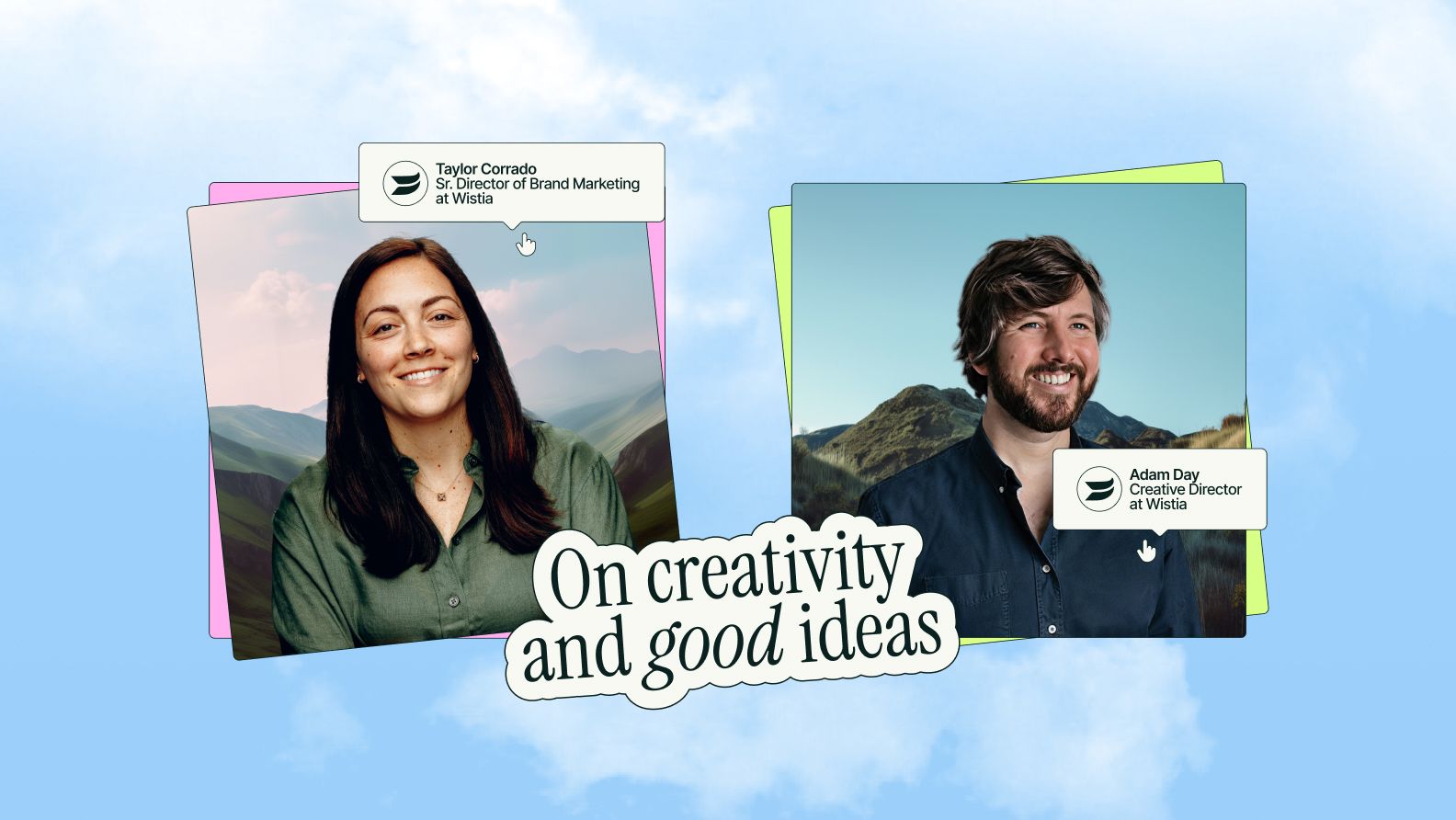
Open doors, unlock ideas: Inside Wistia's creative partnership
An SNL-inspired twist on a classic campaign.An analogue book that’s shipped over 700 copies around the world.A TikTok series narrated by a psychic raccoon.Okay, that last one’s made up. But one thing’s for sure, the creative and marketing teams at Wistia don’t just bring the creativity—they crank it to eleven.That’s why we had to speak with them for Superside’s latest guide, Inside Great Creative Partnerships. Wistia’s Adam Day, Creative Director, and Taylor Corrado, Senior Director of Brand Marketing, were kind enough to oblige and spill their secrets, including: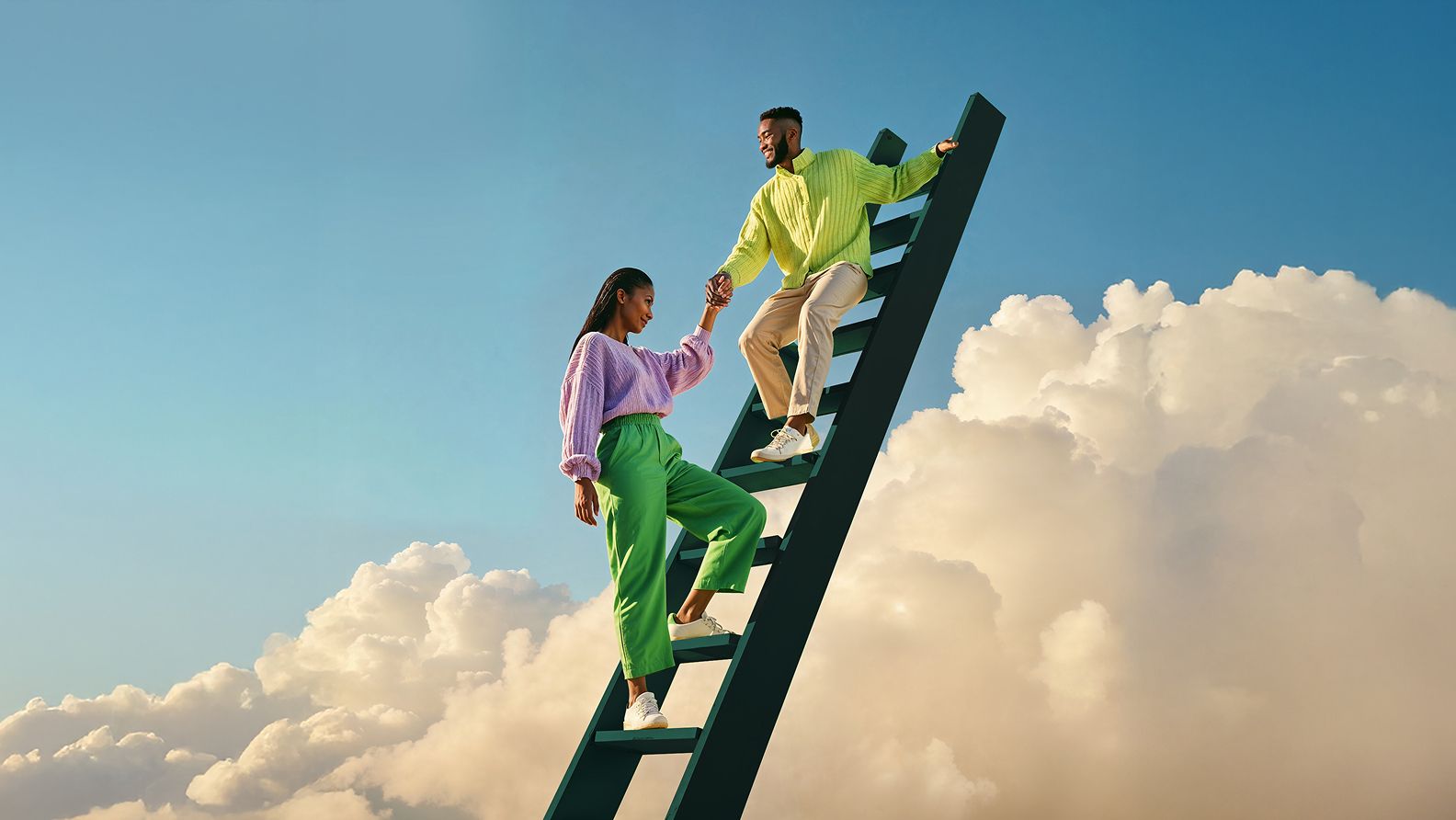
Get off the conveyor belt: 22 leaders on the secret to great work
“It can’t be an assembly line. You have to bake in collaboration—brainstorms, thought starters—before your jump to production. That’s where the best ideas come from.”Kevin Branscum, Senior Director of Brand Marketing at Typeform, shared this thought when we interviewed him for our latest guide. And he wasn’t the only one. The concept of partnerships—true collaboration between marketers and creatives—came up over and over again as the lynchpin for any successful campaign.That’s why we called the guide, Inside Great Creative Partnerships.It digs into hard-earned, real-life lessons from 22 top creative and marketing leaders shipping great work, together. We’ve already spilled their number one secret. But there are many more big ones, like:The source of great ideas